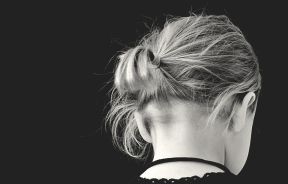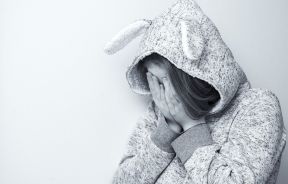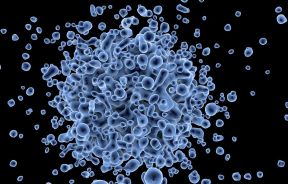The Science Of Attraction: Men Perceive Women With Average, Youthful Facial Features As Beautiful

As the old adage goes, beauty is in the eye of the beholder: The facial features that make someone attractive not only differs by person but also gender. According to a recent study published in the journal PLOS ONE, both men and women perceive facial symmetry as attractive in females, but facial averageness and facial maturity also affect men’s perception of attractiveness.
There are several anthropometric traits that have been associated with attractiveness, especially focusing on the face in great detail. The face is considered to be the most important part of the body in social interactions, since facial features become more important causes of overall attractiveness, according to a 2013 study published in the journal Psychological Science. Moreover, from a biological perspective, facial features hold a biological signal that informs us how healthy we are, meaning attractive faces signal different things in men and women.
A team of researchers at the Universidad Autónoma de Madrid in Spain sought to explore the relationship between what both men and women perceive as attractive, along with a set of facial features. A total of 266 female undergraduate students from the university, ages 18 to 30, were recruited to complete the self-perceived attractiveness component of the study, while 44 heterosexual men rated the attractiveness of the participants from their pictures. The facial traits they explored included facial fluctuating asymmetry (Facial FA), which measures the deviation from bilateral symmetry attributed to the participant; facial averageness, which is the closeness of a face to the population average; facial sexual dimorphism, which is femininity; and facial maturity, which is youthfulness.
The researchers evaluated the importance of these variables by using real faces rather than employing digitally manipulated faces. The female participants were asked to look straight into the camera with a neutral expression, taken in black and white to reduce the effect of color information. First, the female participants reported an estimation of their own physical attractiveness in a 1-to-7 Likert-type scale (1 was the lowest score and 7 the highest). Then males were asked to rate the attractiveness of the participants from their pictures in a Likert 10-point scale, where 0 is “not attractive at all” and 10 is “extremely attractive.”
The findings revealed facial traits independently influence self-perceived attractiveness and male-rated attractiveness when real faces are used. Facial FA affected both estimations of attractiveness at a similar rate, while no other facial feature significantly influenced self-perceived attractiveness. Men’s perception of attractiveness was importantly affected by both facial maturity and facial averageness. This means men prefer faces with shapes closer to the population average who are also youthful.
“It might seem remarkable that Facial FA shows an equivalent effect on the two direct measurements of attractiveness, particularly considering that they are also influenced by different facial features. This observation confirms the importance of Facial FA in determining attractiveness,” wrote the researchers in their paper.
Facial FA has previously been considered a sign of attractiveness and an important factor in mating for many species. FA has been viewed as an indicator for developmental stability, averageness for heterozygosity, and both femininity and youthfulness for fertility and health. The attraction to these features can be supported from a biological perspective when it comes to mating.
A 2013 study published in the journal Biology Letters found the face can signal different things in both men and women when it comes to attraction. Men found women with high levels of stress as less attractive. The researchers were not surprised since stress can suppress fertility, which is why both men and women unconsciously prefer relaxed faces over stressed out ones.
Judging a book by its cover may be superficial, but in this case, it could just be a biological instinct to find the best mate in survival of the fittest.
Sources: Iglesias-Julios M, Munoz-Reyes JA, Pita M et al. Facial Features: What Women Perceive as Attractive and What Men Consider Attractive. PLoS ONE. 2015.
Farmer H, McKay R, Tsakiris M. Trust in Me: Trustworthy Others Are Seen as More Physically Similar to the Self. Psychological Science. 2013.
Coetzee V, Keckp S, Kivleniece I et al. Facial attractiveness is related to women's cortisol and body fat, but not with immune responsiveness. Biology Letters. 2013.
Published by Medicaldaily.com



























